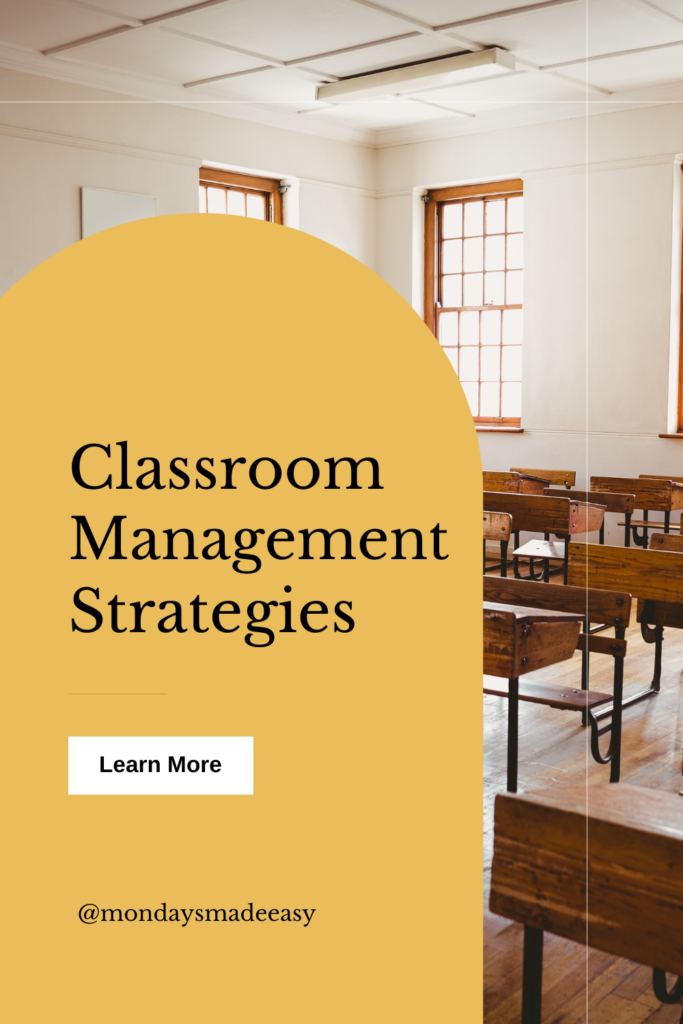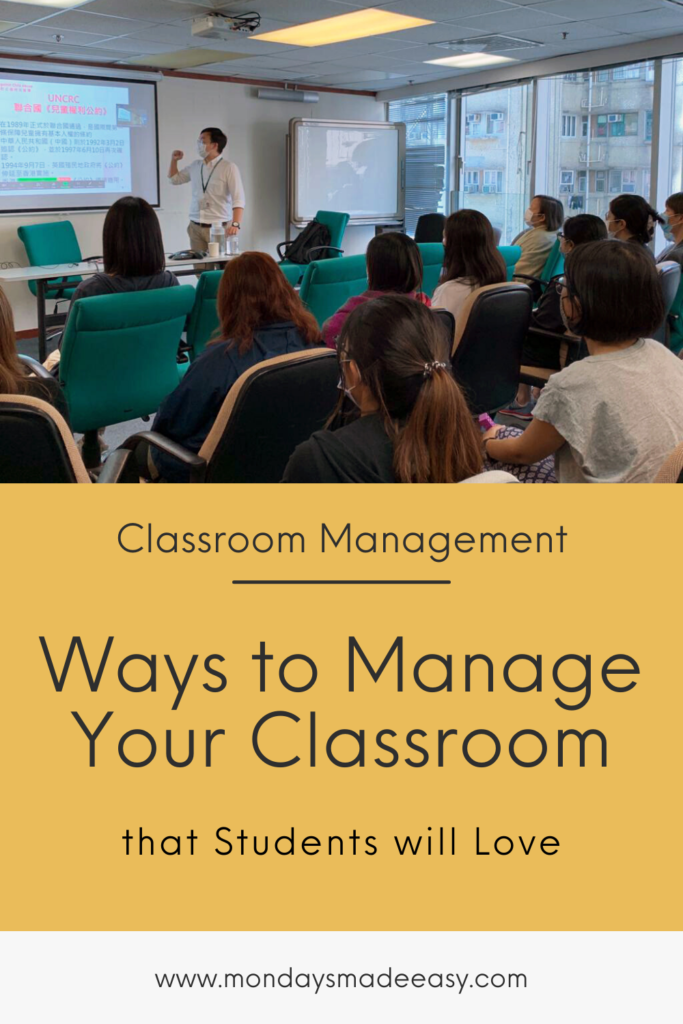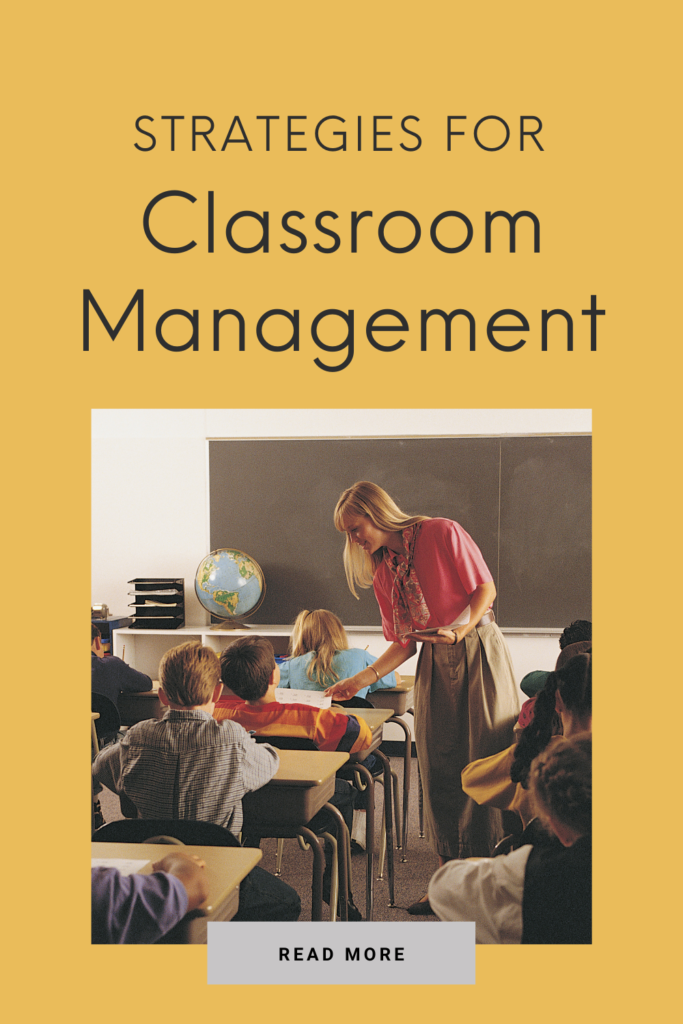If you’re new to teaching, you might believe that you have less to offer to your students than a veteran teacher. You might believe that lacking experience in teaching is your biggest shortcoming. You might think that teachers with decades of experience have everything figured out.
I want to challenge you on these beliefs today.
When I started teaching, I never understood the leverage my inexperience brought me in managing my classroom. I was so uncomfortable with being an authority figure that I tread cautiously with every rule I lay down. Overcome by my inadequacy, I looked to my students for feedback – Did my rules seem fair? What was I missing? How did my classroom management compare to the other teachers within my new school?

Approaching my classroom management strategies with such delicacy made me feel small. It went against all of the advice I had been given (more on this later), and it never made me feel like I was in control.
It wasn’t until I participated in my first department meeting that I realized that this approach was actually working.
In this meeting, I was shocked (and almost offended) to learn that my most cooperative classroom leader was identified as a behaviorally challenged student – in my colleagues’ classes, this student was either oppositional or absent. In my class, this student offered enthusiastic contributions to our lessons and honest feedback on my teaching. This student never missed a class without letting me know first. The polarity of this described behavior was so obscure that I had to clarify that we were talking about the same individual.
It turns out that there are several different ways to manage a classroom. In this blog post, I’ll expand more on the management strategies that my students love, along with some additional resources to implement these management tools in your classroom. Note that this blog post will not address targetted intervention; instead, it will share strategies for a whole-class approach aimed towards the prevention of disruptive behaviours.
To Befriend or Not To Befriend
In my research, I’ve come across experts advocating for opposite perspectives on the question of whether or not to be friendly with students. On her podcast Biliteracy Now, Dyana Vera argues that students don’t need another friend – they need an authority figure to establish structure and uphold accountability. As someone who has struggled under ineffective leadership and unclear expectations, I resonated with this statement. But I also recognize how important it is to consider your age group when exploring management strategies: I can see Dyana’s approach being highly successful in elementary classrooms, where students are still learning behavior expectations and need to differentiate between the role of a teacher and the role of a friend.
For the secondary classroom, my experience has taught me the value of a different approach. Adolescent students don’t want to be treated like children; in fact, this transitional period between childhood and adulthood heralds the struggle for autonomy and the acquisition of advanced reasoning skills. While accountability is still important, so is autonomy – as teachers, we have to respect that. Equitable educator Ms. Zach (@ayearwithmsz) shared an awesome strategy with me, and I think it would fit perfectly into a secondary classroom management plan: this strategy is called “The Warm Demander” and is explained as an equity approach in which educators hold high standards, but also welcome vulnerability and a sense of play into the classroom. This strategy is echoed in the Not Your Teacher Podcast, where the hosts discuss the power of an approachable and friendly demeanor. They also emphasize the importance of student relationships and the fact that respect cannot just be expected anymore.

At the end of the day, we aren’t our students’ friends – to settle this debate, I think a better way to view our role is “mentor.” Mentorship is warm, likable, and trustworthy. Mentorship unoppressively guides students towards their highest goals in a safe and predictable manner. In exchange for their guidance, mentors should not hope for validation or emotional support, but can expect a culture of respect within their classroom.
Embrace the Culture of Your Classroom
It is worth noting that there is no one-size-fits-all when it comes to managing your classroom. And if one strategy works with one cohort of students, it’s wise not to expect it to work with the next. An educator I admire had an interesting perspective to share with me: he told me that as his career went on, his experiences with classroom management became more and more challenging. The last group of students he dealt with were his breaking point – so much so that he decided to retire. I respect this teacher on so many levels: his commitment to his subject area was admirable, and his support for his staff was unprecedented. But his perspective on “kids these days” lacked resilience, along with the simple understanding of an inevitable fact of any career – things change. Treat each classroom and cohort as a unique organism. Be willing to try new things. Don’t get stuck on how “learning” needs to happen, or what “respect” needs to look like – be willing to approach your classroom management with the openness of a first-year teacher, and see what you are able to learn.
Let Go of the Power Struggle
Embracing classroom culture goes hand-in-hand with letting go of the power struggle. Your expectations for classroom conduct may come from your own experience as a student, or the expectations of your colleagues, or even the classes you’ve taught in the past. I invite you to let all of that go. Your role as a facilitator is to guide students towards outcomes that are in their best interest; if you make your role about commanding compliance, be prepared to handle the challenges that come with it.
I used to be jealous of teachers with a natural quality of intimidation; I now understand that just because students’ behaviors are oppressed doesn’t mean that we are reaching our learning goal. In fact, I’d argue that intimidation has the opposite effect. In his article, “Why Intimidation is A Terrible Classroom Management Strategy,” Michael Linsin states that intimidation tactics “[cause] resentment and distrust and [make] the teacher’s ability to build rapport and influence virtually impossible.”

Classroom Management Strategies That My Students Love
The following are some strategies that will enable you to support your students’ culture, mentor your students, and avoid intimidation tactics in the classroom.
- Select a Student Advisory: This brilliant idea is based on Christopher Emdin’s concept of class cogens. A “cogen” includes one member from each diverse culture represented within your classroom (ethnicities, friend groups, feeder schools, etc.) and brings them together to discuss the classroom culture overall. In order to implement a cogen, you must treat it as a privilege (read: buy them pizza for lunch) and you must be open and receptive to all feedback – including criticism. Your representatives will offer suggestions, and can even be expected to signal you in class or directly support the management of their peers. In his book For White Folks Who Teach in the Hood…and the Rest of Y’all Too, Emdin explains the values of cogens: “In research projects across schools in cities like New York and Philadelphia, researchers who have implemented cogens with their students find that teachers emerge from the dialogues with a deeper understanding of their students and the various strengths they bring to the classroom. Furthermore, teachers who act on the feedback they get from students have reported in classroom participation and student performance in even the most challenging academic areas” (67).
- Model Behaviour Expectations: This is a fun activity that doubles as an icebreaker for the start of the school year. Ask students to group together to roleplay what positive behavior looks like. I like to give them particular scenarios, like “What does it look like when we are engaged?” “Reenact your most memorable and effective classroom lesson,” or “What kind of environment do we want to learn in?” Be open to different interpretations of what learning can look like – remember, this is a learning opportunity for everyone (including you). When students present their demonstrations, ask questions. Look for classroom consensus and invite feedback from classmates. Let this be a collaborative process so that your class culture can shine through.
- Implement Student Choice: Student Choice is the perfect tool for mentors and teachers alike. Student choice offers guidance versus compliance by giving students options that enable them to explore within boundaries. Student choice can refer to the physical learning space, which can allow students to sit where they feel most comfortable. It can also refer to academic opportunities, which can be presented as an assessment in the form of a choice board, or as a classwide initiative through a collaborative consensus on a topic or theme.
- Think Before You Speak: An effective leader doesn’t always need to be the loudest person in the room. While overpowering students may seem like an effective resolution to a conflict, I invite you to consider all of the fires that can be created as a result of what was said in the heat of the moment. In the Not Your Teacher Podcast, Sideshow Bob shares a valuable lesson from her years of experience – bite your tongue. Being a professional involves patience and willingness to back down from a confrontation; nonaggression invites opportunities to solve issues in a constructive manner.
- Rely on Peer Learning: In my most recent Professional Development day, my facilitator mentioned that he challenges himself to try and limit his speaking time to 10-15 minutes for each 3-hour session. Sometimes he even times himself. Other educators who use this strategy swear by its efficacy – it promotes inquiry and dialogue from students. During this session, it was the role of the participants to learn from one another. In order to do so, each participant had to pay close attention to instructions in order to effectively lead their own learning session. Participating in this Professional Development was a highly engaging experience for me; I also felt more connected to the strangers I participated in this program with. For our students, peer learning invites the opportunity to teach one another in a language that makes the most sense to them. It forges connections between classmates and deeply engages them with the course content.

I wanted to end with a story about a retired teacher who visited my university as a guest speaker during my year in Teachers’ College. He was presenting on the topic of classroom management. He advised that for the first two months of the year, we should intimidate our students, not cut them any slack, and make the learning environment as challenging as possible. I am paraphrasing, but not exaggerating – his tactics included circling the room silently as you look students in the eye, and avoiding the expression of any positive emotion. I share this story for two reasons: the first is that if this teacher felt strong enough about this strategy, then it very likely worked well for him. If this is the case, I recognize that I am not one to judge, and that teachers can successfully manage their classroom in a number of diverse ways. The second reason I’m sharing this is that there are people like myself who could never authentically manage a classroom in such a way – with this advice in the forefront of my mind, I’ve often challenged my more liberal approach to managing the classroom. If your mentors and colleagues offer you unsolicited classroom management advice that conflicts with your inherent style of teaching, I recommend reading Dr. Christopher Emdin’s book on Reality Pedagogy. This book reaffirms much of what I’ve shared in this post, and offers additional strategies from a noteworthy educator with experience rooted in education today.


[…] intervention plan in your school. For more related articles, you may also want to read about Classroom Management Strategies that my Students Love and Back-to-School Routines to Start the New School Year. In the next Mondays Made Easy article, […]